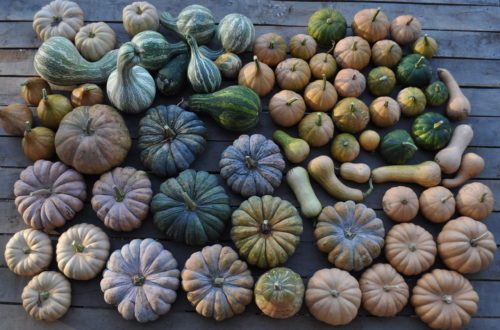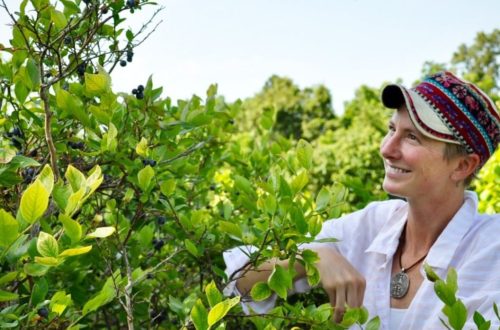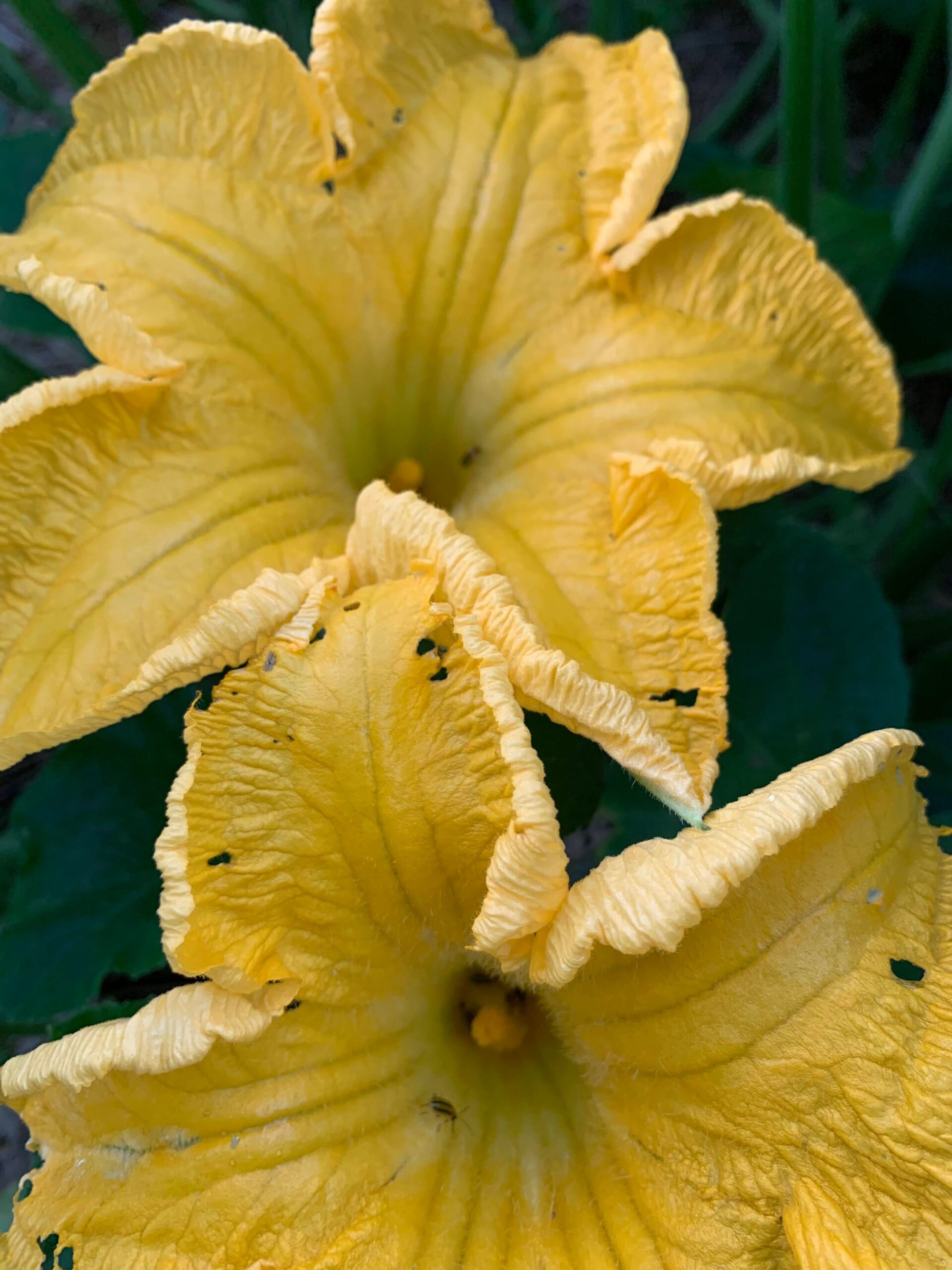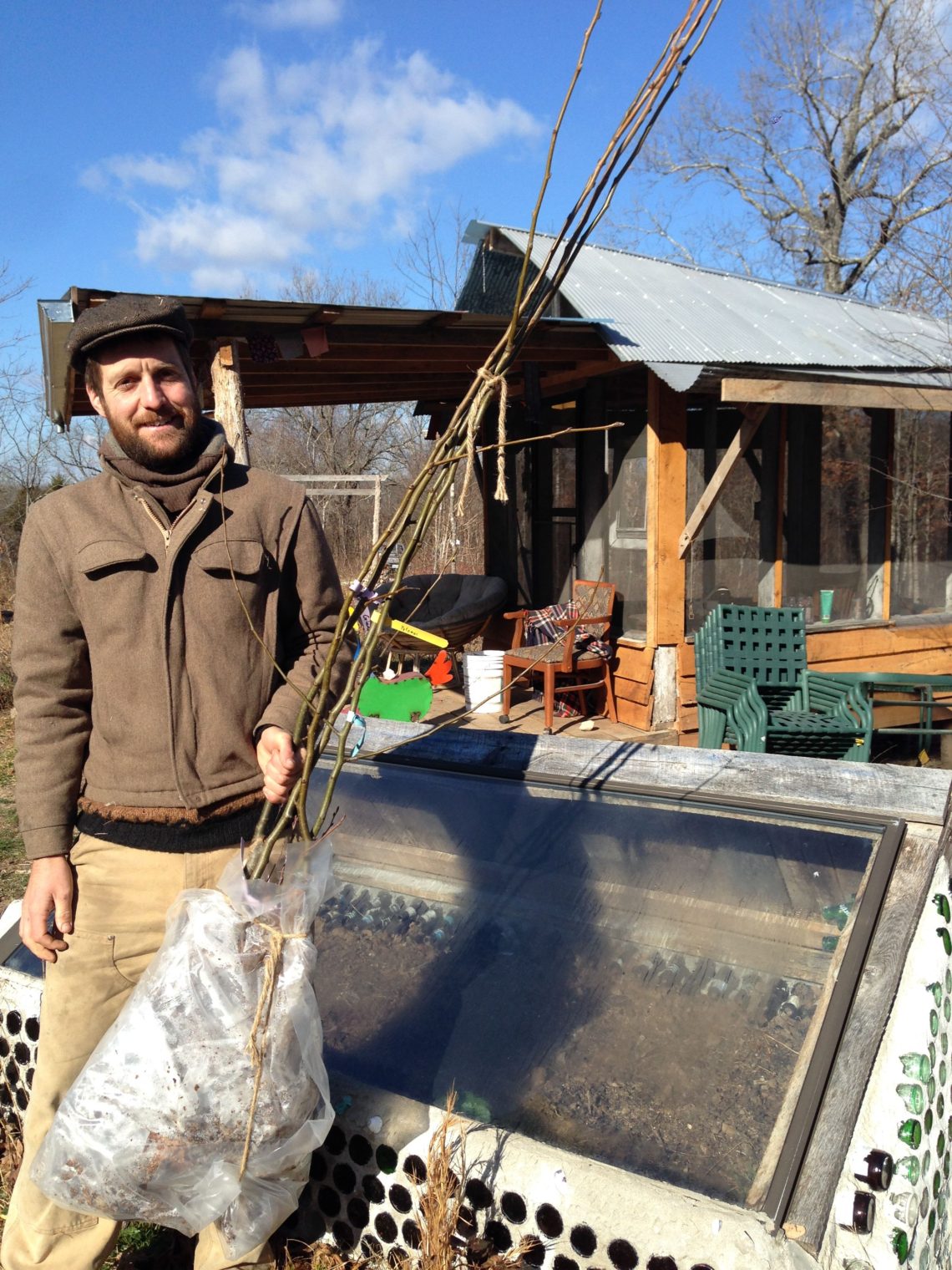
How to Plant Bare Root Trees
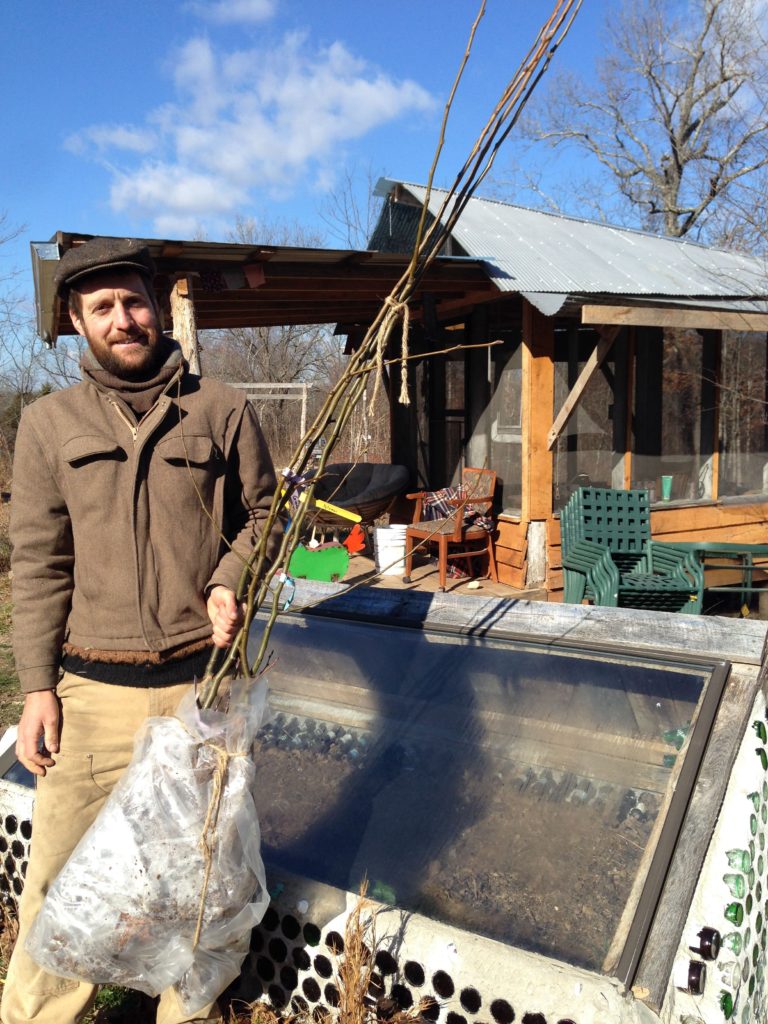
The best time to plant a tree was 5 years ago, the second best time is now.
Planting trees may be one of the easiest ways to make a difference, as the effects of trees are appreciated by so may life forms over years, not to mention the potential of tasty fresh fruit. Imagine the fruits you could be eating if you had already established trees in your yard/farm/community.
The most economical and successful way to plant trees is to obtain bare root stock.
This means the tree was lifted or dug from a field or nursery bed during the dormant season. The trees are shipped without soil or medium and are thus feasible to send through the mail. Bare root trees are ideally planted in the fall to reduce the shock and stress of being uprooted and moved.
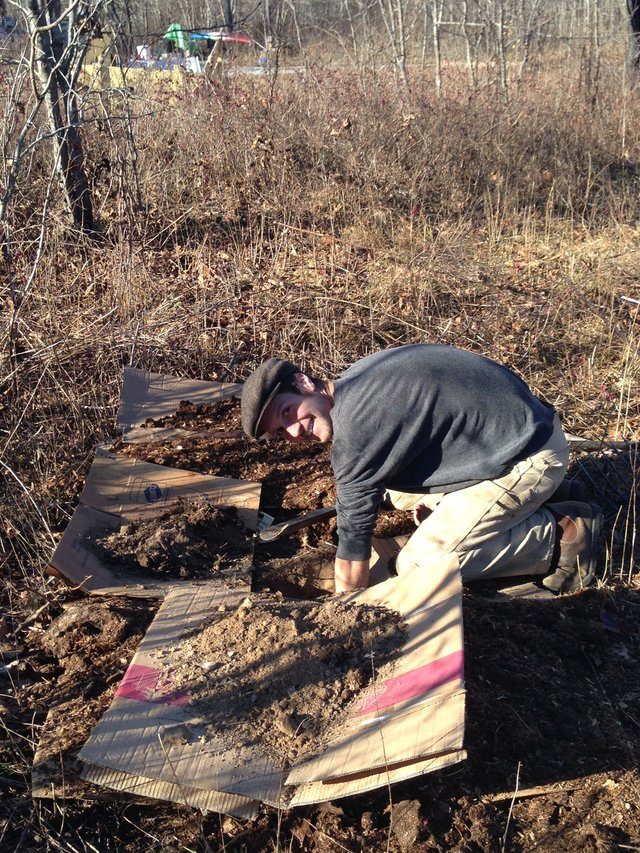
Get informed on what your tree needs and site it accordingly.
This is one of the most important factors to success. Know what climate the tree prefers, the sun and water requirements and what soil types it thrives in. It’s best to pick trees based on the site conditions and your life style, ideally selecting trees that will be happy without amendments and that have care requirements you are willing to offer. It’s also worth valuing what particular fruits and nuts you’re stoked on!!!
Seek out a reputable nursery and order your stock. Plan out where it will live, thinking years into the future of how big it will get. Assemble tools and mulch materials before planting day and try not to plant on extreme weather days to reduce stress.
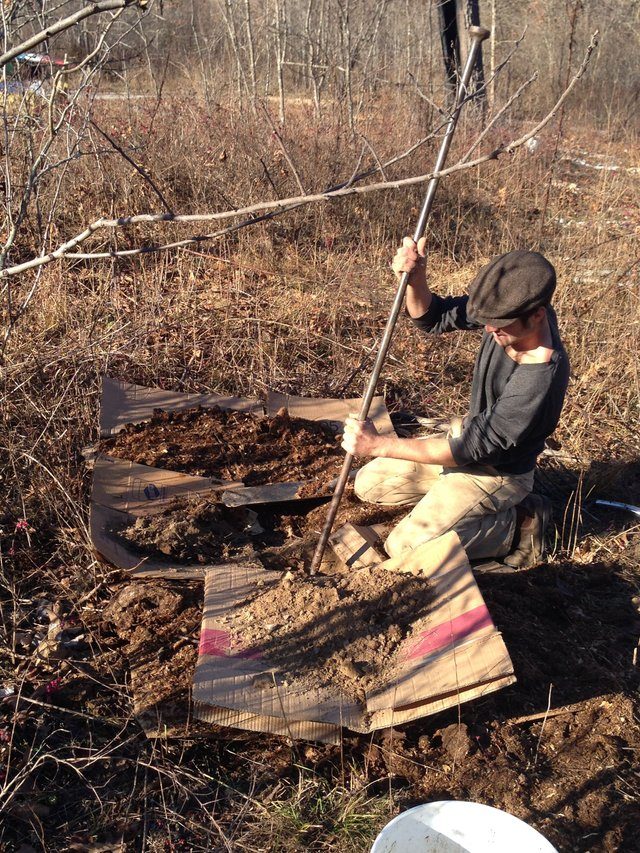
Upon arrival inspect the tree.
Most nurseries will prune the roots and possibly the top before shipping. Trim any obviously dead roots now. Soak trees in a bucket once removed from shipping packaging. You may want to add kelp to assist with transplant shock and to add micronutrients. Assemble digging tools (I use a trenching shovel and digging bar in our rocky Ozark soil). Double check spacing and expected growth potential before getting going.
Dig a hole just large enough to accommodate roots.
Avoid going any deeper than needed as the tree will establish best in undisturbed soil. Likewise don’t add anything to the hole as this will discourage roots from spreading and will slow the trees development in the long run.
As you dig, place the soil from the hole on a piece of cardboard or bucket to avoid loosing any. Keep in mind it’s also best to put it back in the order it was removed (keep topsoil on top and subsoil on the bottom). Rough up the edge of the side of the holes to prevent any smooth surfaces from inhibiting lateral root growth.
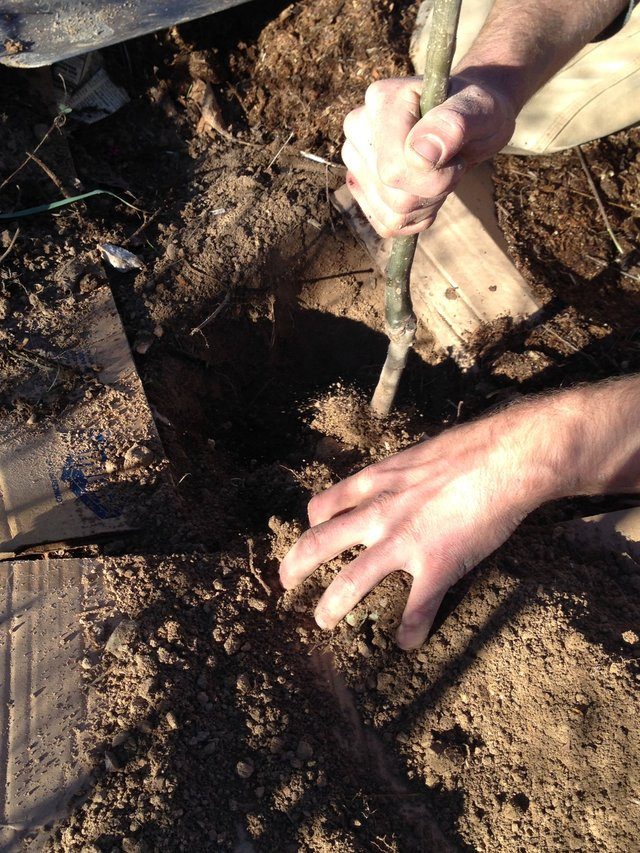
Place the tree in the hole, making sure roots are not bunched or tangled.
The planting depth should be the same as it was in nursery, check by looking for a change in bark texture. Make sure to account for the depth of mulch and settling as trees planted too deeply will suffer. If your site has been heavily disturbed, add mycorrhizal inoculant directly to roots now. These fungi (myco) act in symbiosis with roots (rhizal) and are present in healthy soils. They make for better nutrient uptake and water retention, leading to healthier trees.
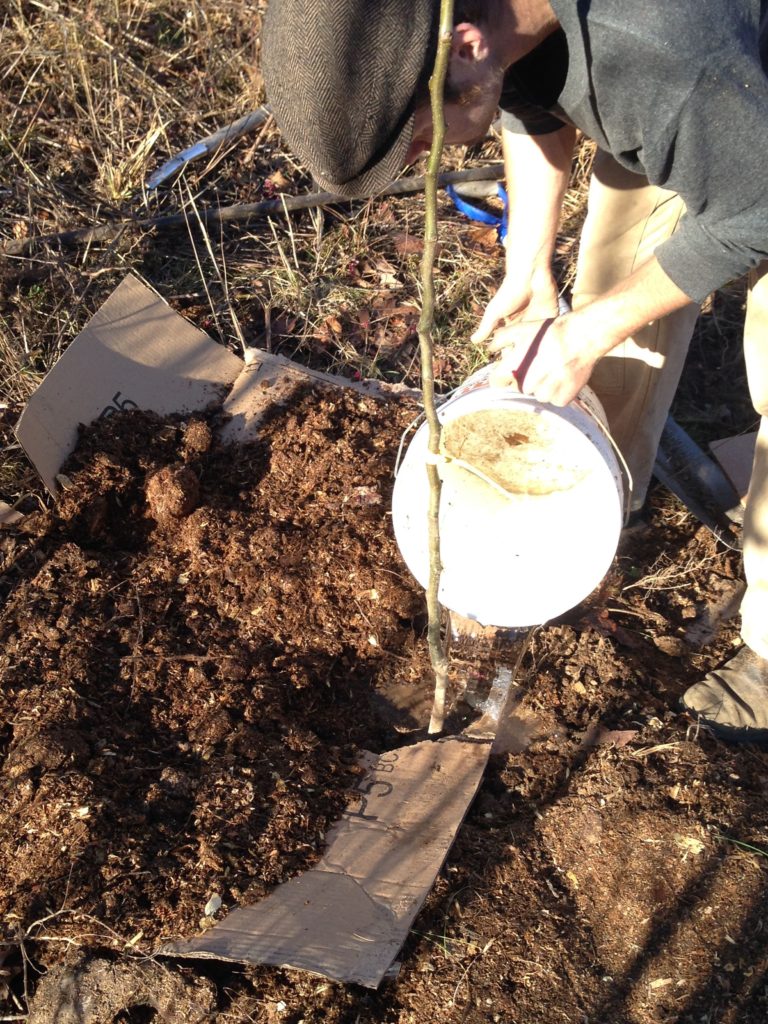
Add soil around roots in the hole and check the trees placement, making sure to keep upright and straight.
Add a little at a time until fully covered. Slightly compress soil around the trunk and wiggle gently to settle soil. Water in heavily (I use 4-5 gallons per tree) to settle air pockets in soil. Root development will suffer if air pockets are present.
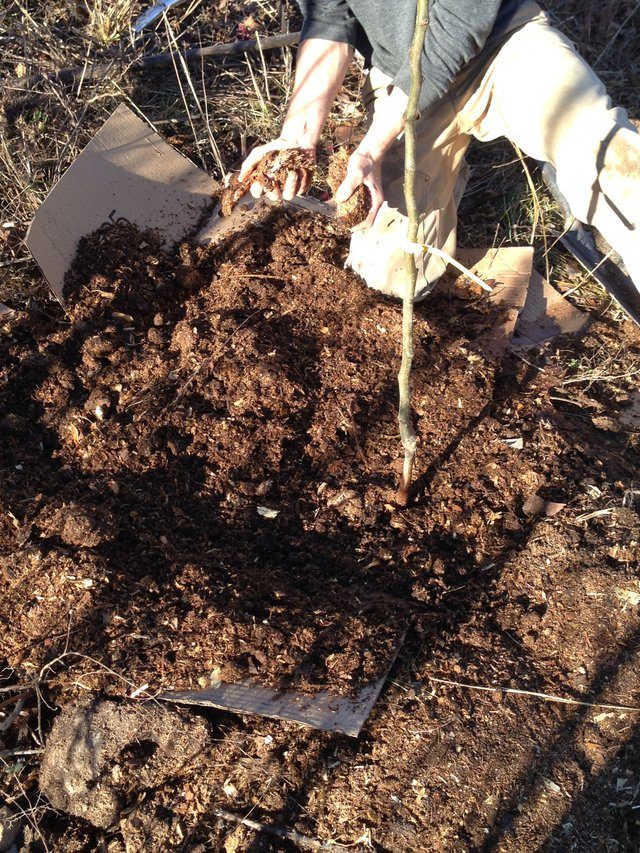
Depending on the site condition and type of tree, top dress with any amendments (adjusting pH, specific nutrient requirements, compost etc…) as needed or desired.
Different strokes for different folks. Add a biodegradable weed-suppressing barrier such as cardboard or newspaper. Apply a generous layer of woody mulch such as wood chips or planer shavings to favor the fungal environment trees love. Make sure to leave a space around the trunk.
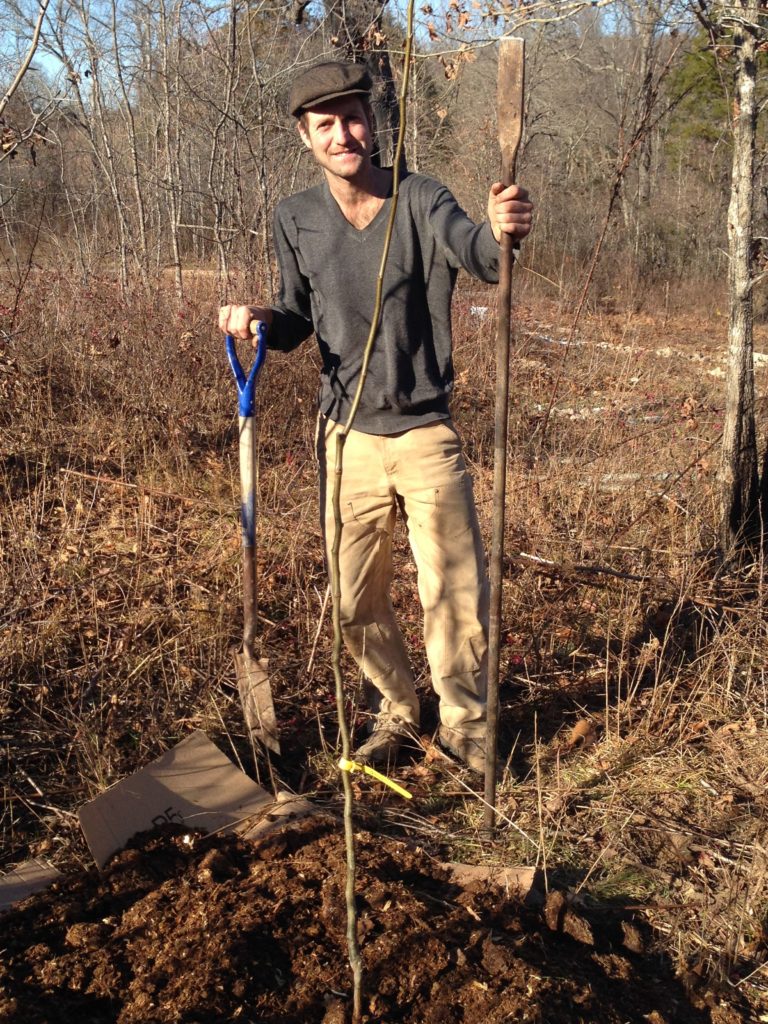
CONGRATULATIONS, you have accomplished a noble and worthwhile endeavor. Keep up the good work!
What trees have you planted this year? What trees do you hope to establish in the future.
Thanks for reading. Please feel free to comment, follow, share and upvote! Grow Perennials! Plant Trees! Live Permaculture!



